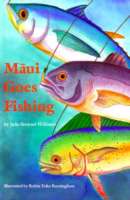
Måaui makes a fishing hook of great power and out of the sea he pulls land that becomes the islands of Hawaii.

Måaui makes a fishing hook of great power and out of the sea he pulls land that becomes the islands of Hawaii.
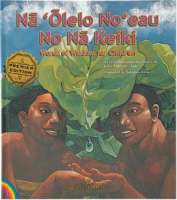
This book is about the words of wisdom from Hawaiian culture.
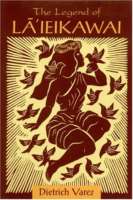
The twins La’ieikawai and La’ielohelohe are separated at birth but remain linked by their great beauty and a series of unscrupulous admirers and fickle husbands. Eventually the sisters are reunited with the help of a colorful cast of characters, including a man-eating lizard, a “cosmic” spider, and a giant bird, and find happiness at last in each other’s company. This timeless ka’ao, or legend, of long ago is lovingly retold and illustrated here by renowned Island artist and storyteller Dietrich Varez.
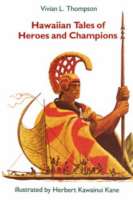
Twelve traditional Hawaiian tales record the exploits of heroes with supernatural powers.
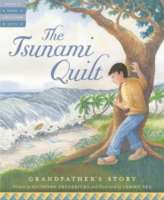
On April 1, 1946, an enormous tsunami wave strikes Hilo, Hawaii, causing death and destruction. Even those islanders who are fortunate to have survived find their lives forever altered. Young Kimo loves his grandfather very much. They go everywhere together, sharing island stories and experiences. But there is one story his grandfather has yet to share and that is the reason behind their yearly pilgrimage to Laupahoehoe Point. Here, in silent remembrance, Grandfather places a flower lei atop a stone monument.
Featured in Volume VI, Issue 1 of WOW Review.
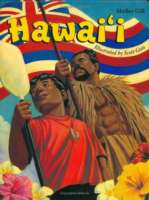
Take a tour of the Aloha State with Patrick and his father. They kayak around the Big Island, drive to Haleakala Crater, visit the paniolos on Parker Ranch, and so much more. Learn historical, natural science, and cultural information as well as some Hawaiian words and fun facts.
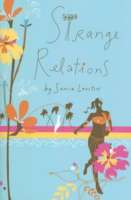
A summer in paradise. That’s all Marne wants. That’s all she can think of when she asks her parents permission to spend the summer in Hawaii with Aunt Carole and her family.
But Marne quickly realizes her visit isn’t going to be just about learning to surf and morning runs along the beach, despite the cute surfer boy she keeps bumping into. For one thing, Aunt Carole isn’t even Aunt Carole anymore—she’s Aunt Chaya, married to a Chasidic rabbi and deeply rooted in her religious community. Nothing could be more foreign to Marne, and fitting into this new culture—and house full of kids—is a challenge. But as she settles into her newfound family’s daily routine, she begins to think about spirituality, identity, and finding a place in the world in a way she never has before.
This rich novel is a window into a different life and gets to the very heart of faith, identity, and family ties.
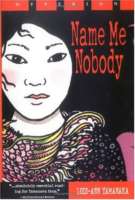
Fourteen-year-old Emi-Lou Kaya feels like a nobody in her Hawaiian town. Abandoned by her mother at age three, Emi-Lou hasn’t a clue as to who her father might be, and on top of all this, she is overweight. Her only salvation is the strength of the hard-as-nails but loving grandmother who raised her, and the feisty spirit of her best friend Yvonne. It is Yvonne who renames the dynamic duo Von and Louie, and who puts Emi-Lou on a strict weight-loss regimen. But Emi-Lou starts to worry about losing her touchstone when Von begins spending a little too much time with Babes, an older girl from the softball team. Rumors abound that her soul sister is a “butchie,” and when Emi-Lou suspects it’s true, she becomes desperate to get Von back to “normal” and back to her role as best friend.
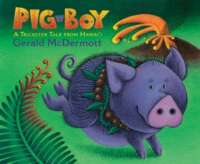
The mischievous, shape-shifting Pig-Boy gets in trouble with both the King and Pele, the goddess of fire, but always manages to slip away as his grandmother has told him to do.